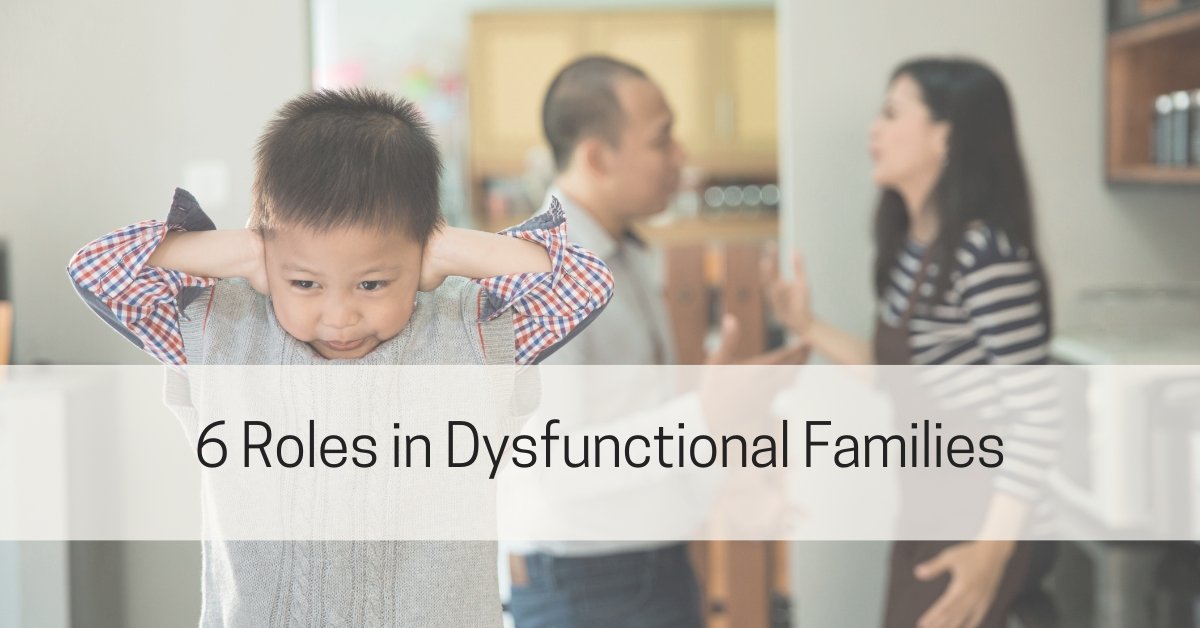Were you the scapegoat or peacemaker in your family of origin?
In dysfunctional families, members often adopt specific roles as coping mechanisms to deal with the chaos and instability. These roles help us survive the dysfunction but also create problems.
This post contains an affiliate link, which means we may earn a small commission if you make a purchase through our links. There is no added cost for you.
Addiction and Mental Illness Impact the Entire Family System
In a dysfunctional family, the struggles of one individual have a ripple effect, impacting the entire family system. Whether it’s mental health issues, addiction, or rage, the dysfunction doesn’t stay contained to just one person. Everyone adopts coping strategies to deal with the stress of living with a troubled person and many of these coping strategies have lasting negative effects.
Over time, these roles become deeply ingrained and persist even when the troubled person gets sober, dies, or leaves the family. They can also be passed down generationally through modeling and repeated family dynamics.
Children in dysfunctional families often experience a chaotic or unpredictable home life which may include physical and emotional abuse. Even more common is childhood emotional neglect, where the child’s emotional needs are ignored due to the chaos and focus on dealing with the troubled family member and their problems. Children may feel embarrassed and ashamed, lonely, confused, and angry. Some children cope by trying to be perfect and others cope by cracking jokes and getting into trouble.
Family members have to walk on eggshells and quickly learn that the troubled person dictates the mood of the entire family. Family members don’t have the opportunity to explore their own interests and feelings. Life is about keeping the peace, simply surviving, and trying to keep the family from imploding.
Problems are a tightly held secret in most dysfunctional families. Children are told overtly or covertly not to talk about what’s going on at home. As a result, they feel shame – a sense that there’s something wrong with them, that they are somehow to blame for their parent’s substance use, mental illness, rage, abuse, and erratic behavior.
A Note About Labels
I want to preface this discussion of family roles by saying that I know that labeling people can be stigmatizing and often it isn’t accurate. However, it can be useful in conveying a general picture of common dynamics in families dealing with dysfunction. Like anything else, please take the aspects of these labels and roles that are helpful, and leave the rest.
Individuals and family systems are complex. In reality, people don’t fall neatly into categories. You may have played more than one role at different times in your life or you may identify with a combination of these traits and coping strategies.
Common Dysfunctional Family Roles
These roles were originally defined by Sharon Wegscheider-Cruse and written about in her book Another Chance: Hope and Health for the Alcoholic Family.
The troubled person (addict, narcissist, abuser, identified patient)
Troubled people function and fulfill their responsibilities to varying degrees. Generally, problems progress over time causing increased stress, conflict, chaos, and dysfunction in the family. For example, a parent struggling with alcoholism is likely to increase their use over time and experience more negative consequences such as job loss, financial problems, anger, depression, or legal problems. More time and money is spent drinking and recovering from excessive use. They blame others for their problems, can be angry and critical, unpredictable, and don’t care about how their actions affect others.
The enabler (caretaker or peacemaker)
The enabler tries to smooth things over or keep the peace. They try to maintain the illusion that everything is okay by denying that problems exist or avoiding dealing with them.
The enabler tries to protect the troubled person with enabling behaviors such as making excuses or doing things for the troubled person. The enabler denies or minimizes the troubled person’s behavior or problems. Enabling is also an attempt to feel in control of a situation that is dangerous, chaotic, or unpredictable.
The enabler goes to extremes to ensure that family secrets are kept and the rest of the world views them as a happy, well-functioning family.
The enabler is often the troubled person’s spouse, but can also be a child.
The hero (golden child)
The hero is an overachiever, perfectionist, and extremely responsible. This child looks like he has it all together. He tries to bring esteem to the family through his achievements and external validation. He’s hard-working, serious, and wants to feel in control.
Heroes put a lot of pressure on themselves; they’re highly stressed, often workaholics with Type A personalities.
The scapegoat
The family scapegoat is blamed for all of the family problems. A scapegoat child acts out and temporarily distracts attention away from the troubled person and family problems.
The scapegoat is often the family member who’s most aware of the dysfunction and unwilling to keep quiet about it. He’s rejected by his parents and doesn’t fit in.
The mascot (clown)
The mascot tries to reduce family stress through humor, goofing around, or getting into trouble. He’s seen as immature or a class clown. Humor also becomes his defense against feeling pain and fear.
The lost child
The lost child is largely invisible in the family. He doesn’t get or seek attention. He’s quiet, isolated, and spends most of his time on solitary activities (such as reading, watching TV, playing video games, or online activities) and may escape into a fantasy world. He copes by flying under the radar.
No matter what role(s) you played in your dysfunctional family, it’s possible to overcome the effects of having a troubled parent and learn healthier coping strategies. Getting a clear and honest look at how your family of origin functioned is an important place to begin. Working with a therapist, attending 12-step meetings (Al-Anon, Codependent Anonymous, or Adult Children, and reading self-help books can also be helpful.
©2024 Dr. Sharon Martin, LCSW. All rights reserved. Photos courtesy of Canva.com.
Related Articles
Publisher: Source link





